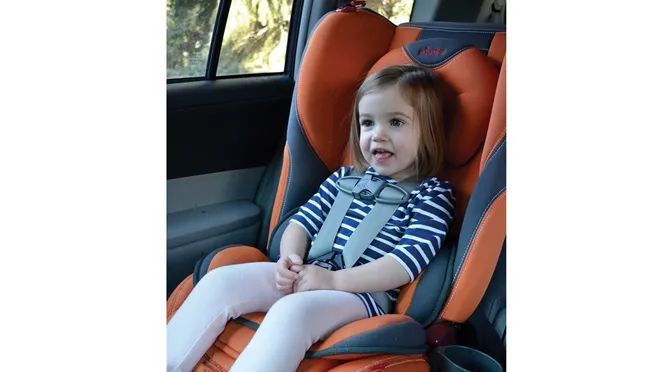
Common Car Seat Myths & Misconceptions
Car seat safety is one of the hottest topics among parents today. Advancements in car seat technology and vehicles have come a long way, and so has the research on safety and best practices. We’re busting some myths and misconceptions about car seat safety to give you confidence as you install seats, buckle kids in, and hit the road.Harnesses
When it comes to car seat safety, harness location is key. “I often see harnesses that aren’t at the correct location,” says Koren Bloom, Safety Coordinator for Safe Kids Yellowstone County. “For rear-facing, harnesses should be at or below the shoulders, and for forward-facing, at or above the shoulders.” The harness should also be snug enough that you can’t pinch it, but not digging into the child.
Tethers
New research shows that a big car seat misconception is the lack of use of a top tether with forward-facing car seats. The tether is the strap that secures the top of the car seat to a dedicated anchor in the car. When attached and used correctly, the top tether will keep a car seat from pitching forward in a crash or sudden stop, protecting the child’s head. Unfortunately, the latest research shows that 64% of forward-facing car seats are not being attached using the tether.
Seat Belt vs. Lower Anchors
What is the best way to install a car seat — with the seat belt or the lower anchors? Koren Bloom busts the myth that one is safer than the other for kids under 40 pounds. “Use either the seat belt or the lower anchors — not both! Both are safe enough, and one is not safer than the other until the combined weight of the car seat and child is 65 pounds. Then you should use a seat belt and tethers to secure the car seat.”
Winter Coats
On cold Montana days, taking off a child’s winter coat can seem counter-intuitive. “But you don’t want a lot of padding,” Bloom warns. “We encourage parents to take coats off, strap them into their harness safely, and then put their coats on backward over the harness to keep them warm.”
Rear Facing
While Montana and Wyoming law only requires that a child remain rear-facing until one year of age, safety experts warn that this isn’t the wisest practice for protecting little ones. It is advised that you keep your child rear-facing for as long as possible, as this provides greater protection for their fragile heads, necks, and backs, and allows tendons, ligaments, and bones to develop further.
History & Expiration
Car seats can get expensive. Add multiple kids to the mix, and the dollars add up! While it’s easy to purchase a used car seat or continue using an expired seat, you may want to reconsider. Don’t purchase a car seat unless you know its history. Regarding expiration, check the date on the car seat. If no expiration date is given, the rule of thumb is six years from when it was manufactured. Plastic can become brittle and not hold up as well in the event of a collision. Throw seats away when they become expired.
Safe Kids Yellowstone County offers free car seat checks on the second Saturday of every month from 10:00am - 2:00pm. There is no appointment necessary and no cost. Car seat checks are for all ages and done in the ambulance bay at American Medical Response, 1701 Montana Ave in Billings.
about the author...Anna Rogers is a transplant from the Carolinas with a background in marketing and graphic communications. She is a wife and mother who loves to garden, cook, and practice yoga. Anna is passionate about travel, which at its core is really a passion for people, as she believes people and community are what truly bring life and beauty into a place.
Originally printed in the pages of Simply Family Magazine’s May 2018 issue.
Never miss an issue, check out SFM’s digital editions, here!
